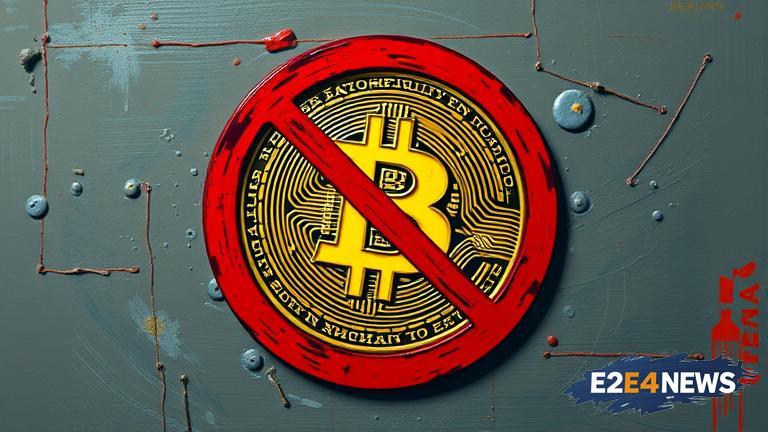The US regulatory bodies have recently released new guidance on the safekeeping of crypto assets, aiming to provide clarity and transparency to the industry. This move is seen as a significant step towards regulating the crypto market, which has been plagued by concerns over security and investor protection. The guidance, issued by the Office of the Comptroller of the Currency (OCC), the Federal Reserve, and the Federal Deposit Insurance Corporation (FDIC), outlines the expectations for banks and other financial institutions when it comes to holding and safeguarding crypto assets. The regulators have emphasized the importance of robust risk management practices, including effective controls, monitoring, and reporting. The guidance also highlights the need for financial institutions to have a clear understanding of the crypto assets they are holding, including their valuation, liquidity, and potential risks. Furthermore, the regulators have stressed the importance of compliance with anti-money laundering (AML) and know-your-customer (KYC) regulations. The new guidance is expected to have a significant impact on the crypto industry, as it provides a clear framework for financial institutions to follow. This, in turn, is likely to increase investor confidence and attract more institutional investors to the market. However, some industry experts have raised concerns that the guidance may be too restrictive, potentially stifling innovation and limiting the growth of the crypto market. Despite these concerns, the regulators have emphasized their commitment to supporting innovation and facilitating the development of the crypto industry. The guidance is also seen as a positive step towards greater regulatory clarity, which is essential for the long-term growth and stability of the crypto market. In addition, the regulators have encouraged financial institutions to engage with them and provide feedback on the guidance, demonstrating a willingness to work collaboratively with the industry. The US regulatory bodies have also emphasized the importance of international cooperation and coordination, recognizing that the crypto market is a global phenomenon that requires a unified approach. Overall, the new guidance on crypto asset safekeeping is a significant development that is likely to have far-reaching implications for the crypto industry. As the regulatory landscape continues to evolve, it is essential for financial institutions and industry participants to stay informed and adapt to the changing requirements. The guidance is also expected to have a positive impact on the overall stability of the financial system, as it promotes greater transparency, accountability, and risk management practices. Moreover, the regulators have highlighted the need for ongoing monitoring and evaluation of the crypto market, recognizing that the industry is rapidly evolving and that regulatory approaches must be flexible and adaptable. In conclusion, the new guidance on crypto asset safekeeping is a crucial step towards regulating the crypto market and promoting greater stability and confidence in the industry.
Tue. Oct 21st, 2025
